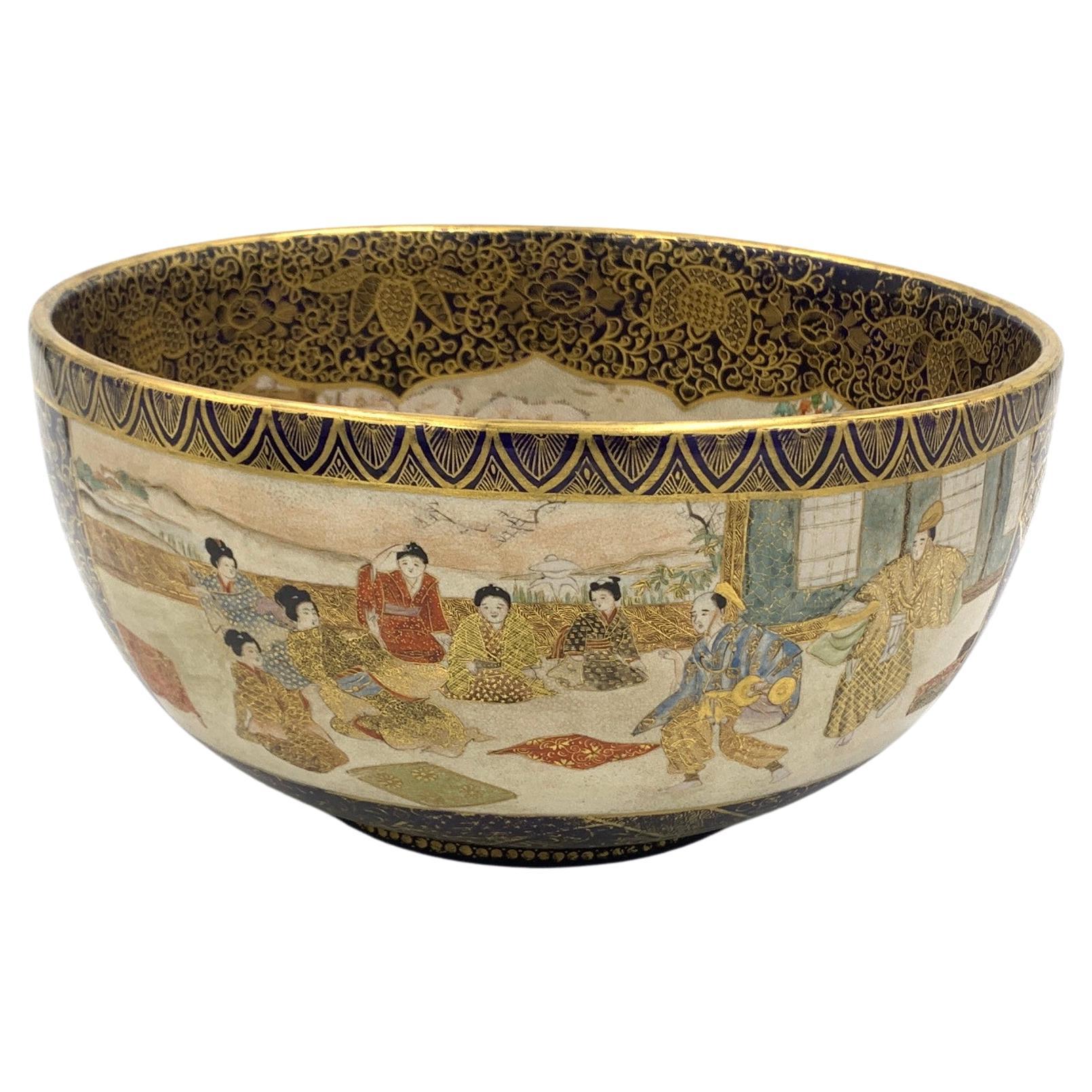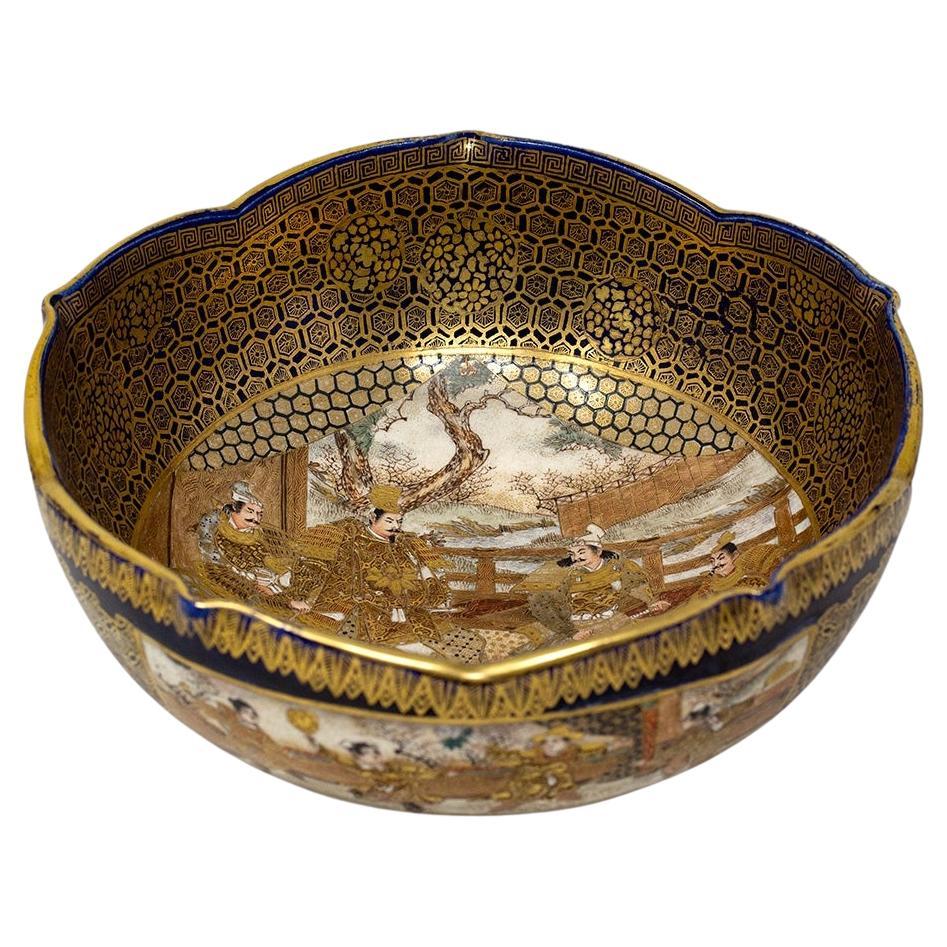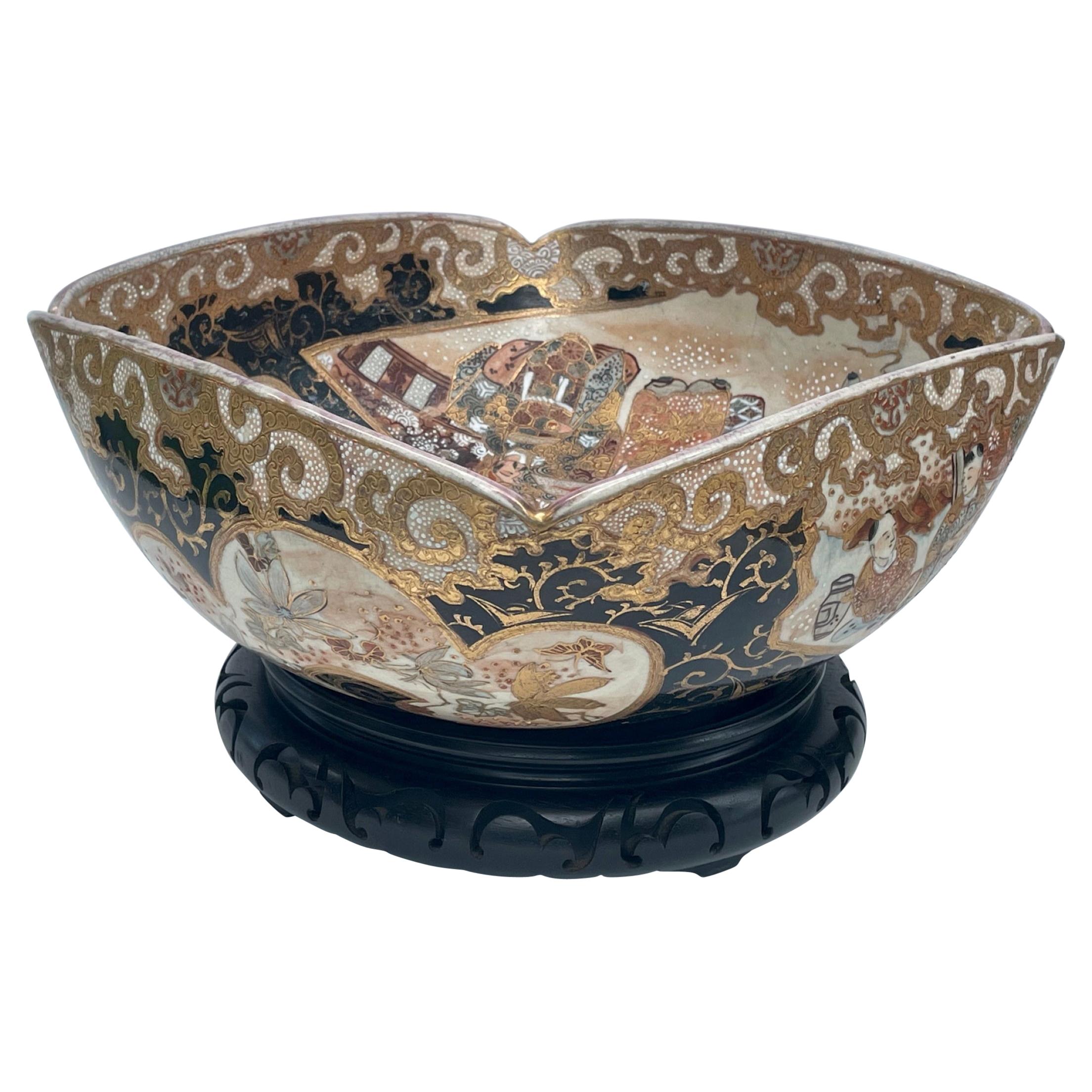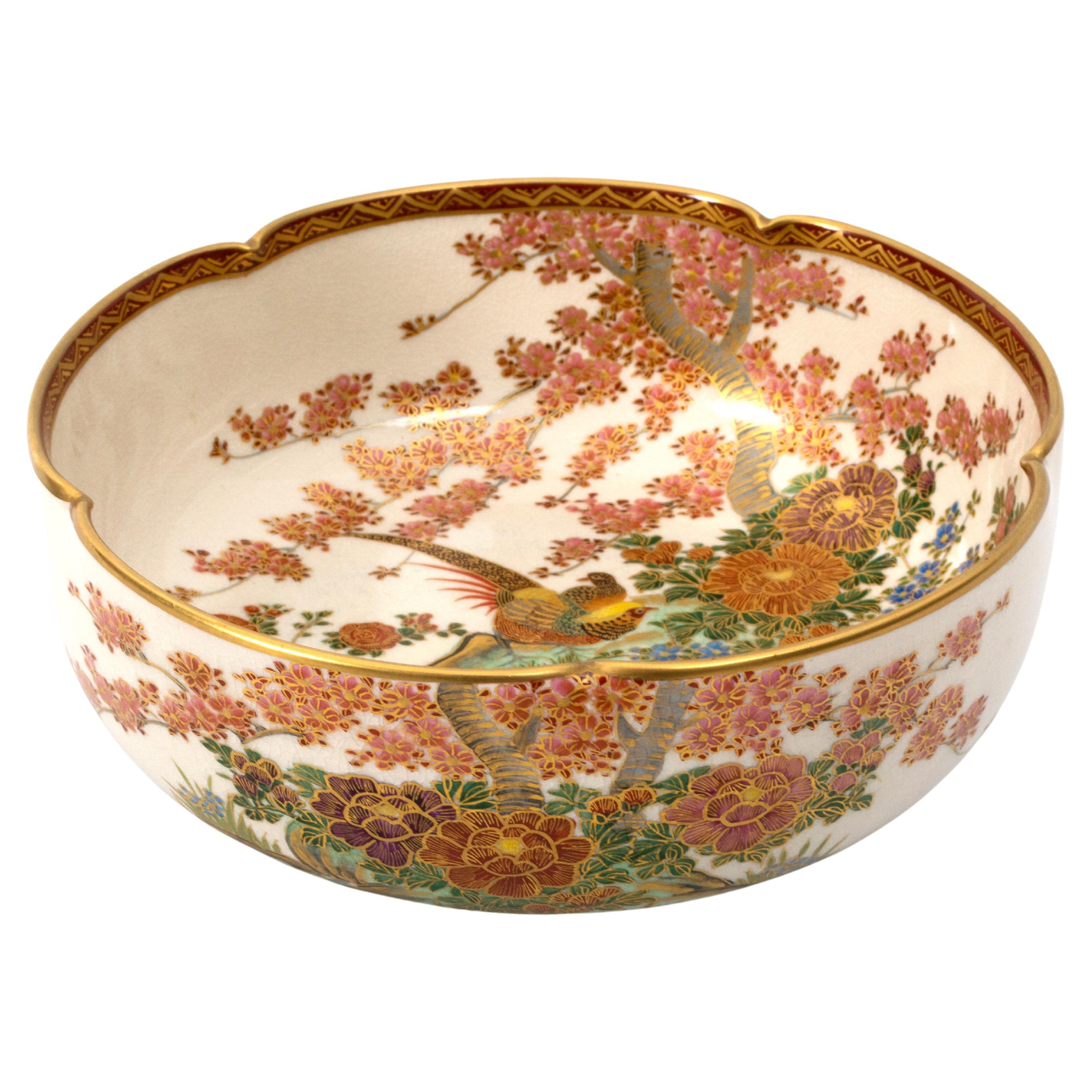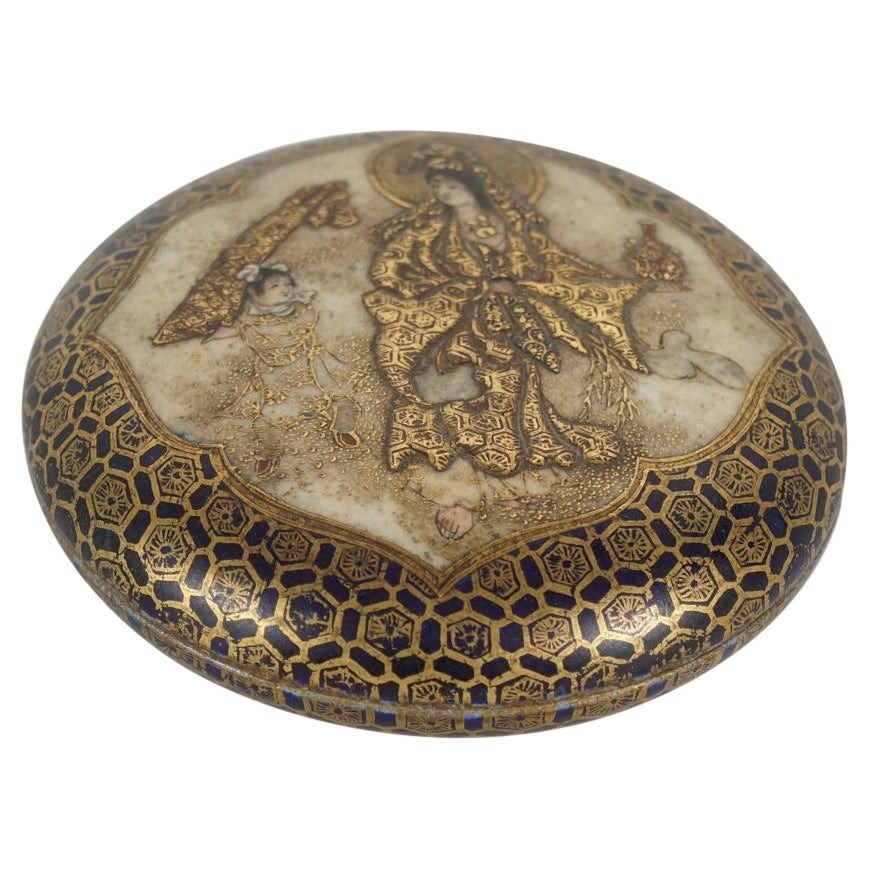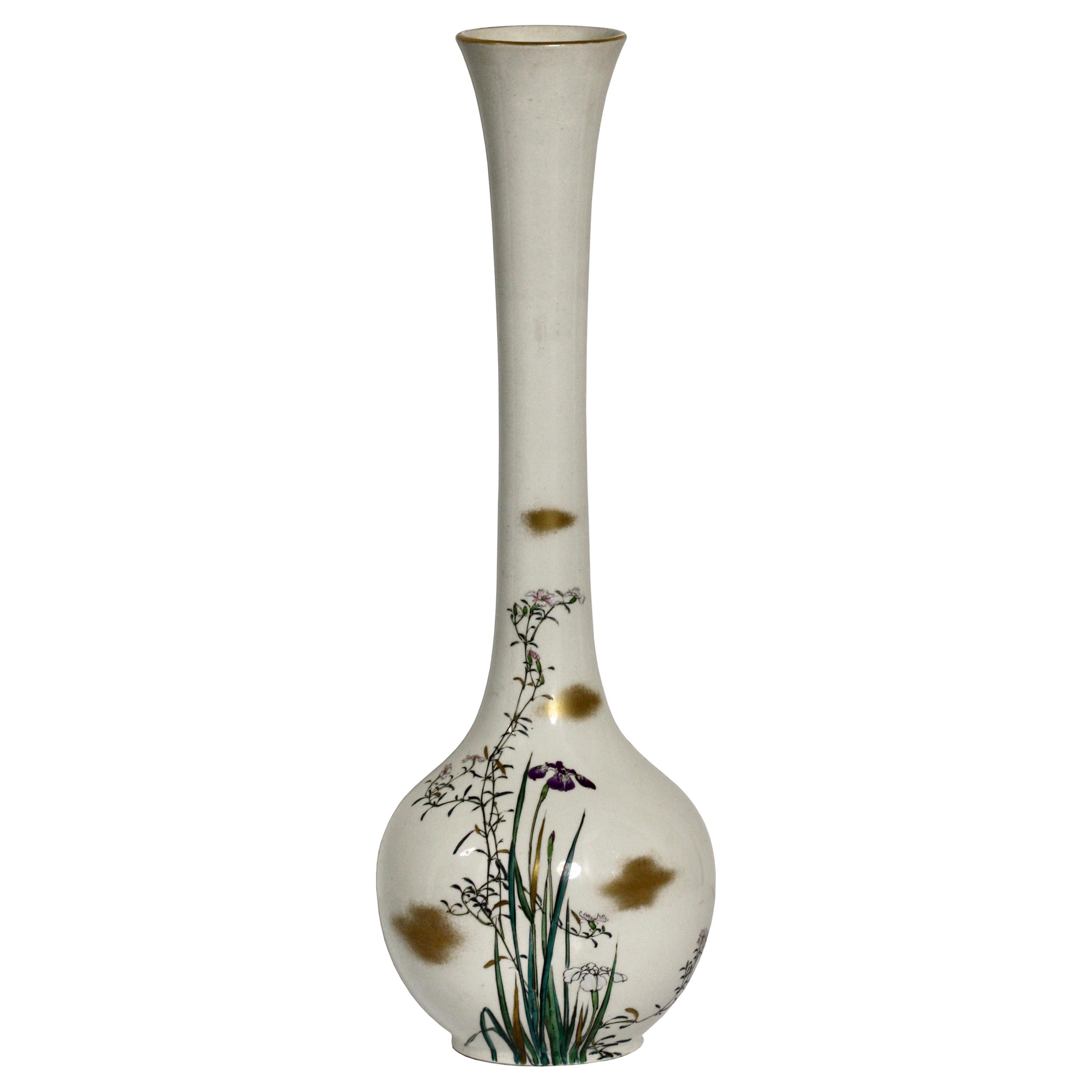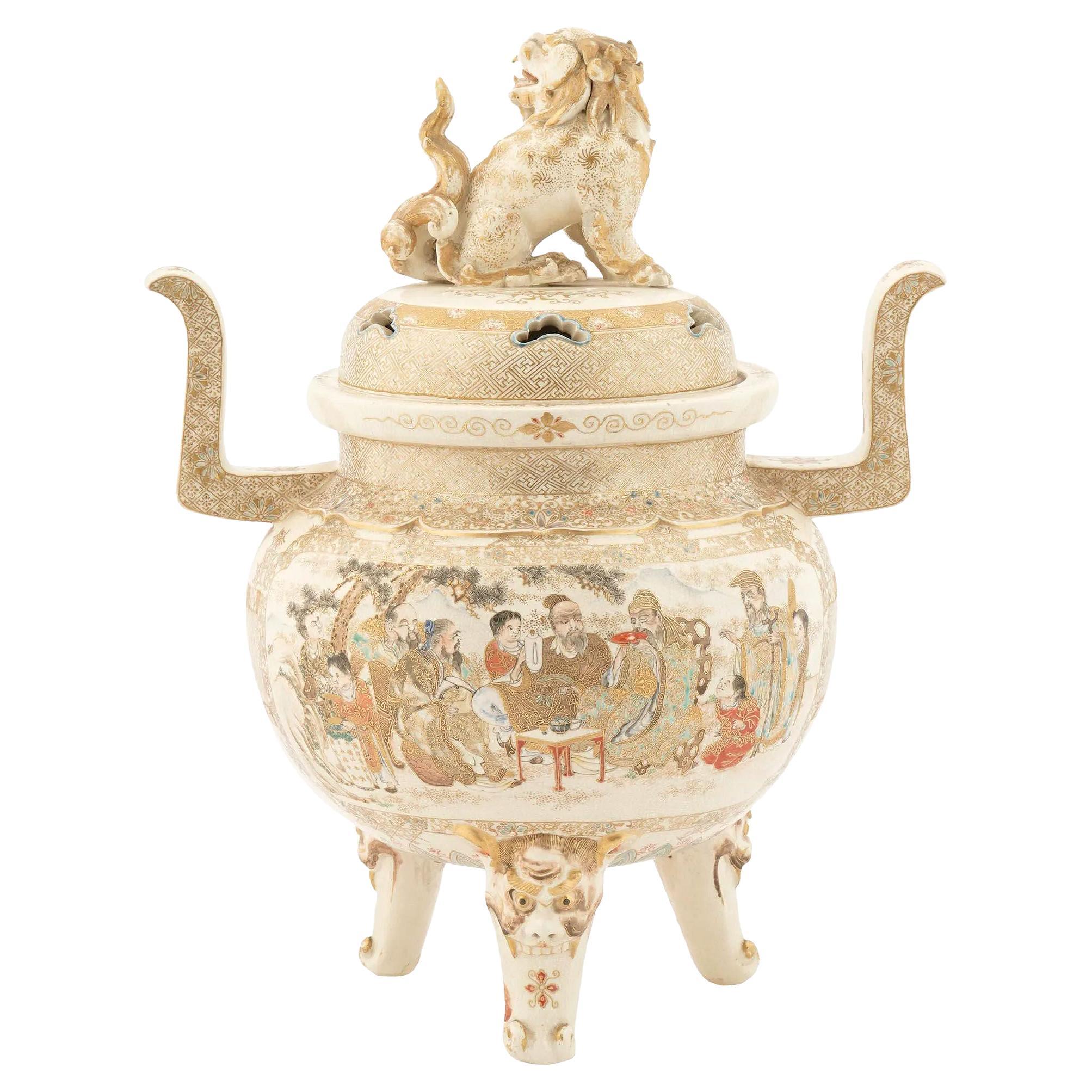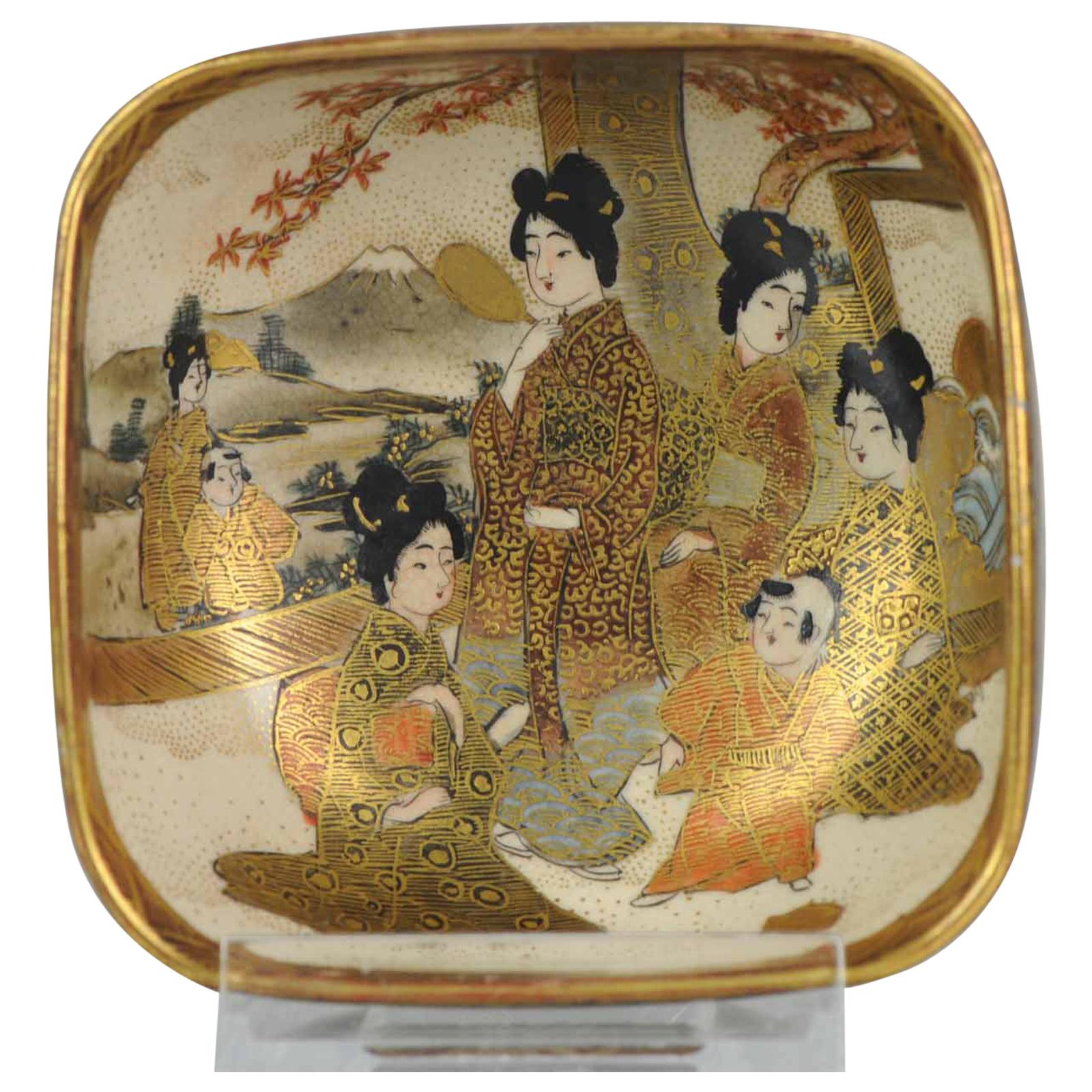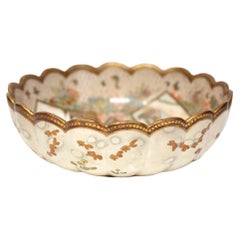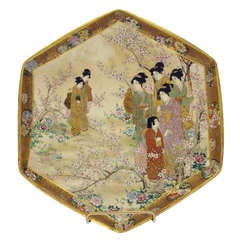
Satsuma, Nice Meiji Period Flat Bowl
View Similar Items
1 of 6
Satsuma, Nice Meiji Period Flat Bowl
About the Item
- Dimensions:Height: 9.45 in (24 cm)Diameter: 1.78 in (4.5 cm)
- Period:
- Date of Manufacture:1880 - 1900
- Condition:Wear consistent with age and use.
- Seller Location:Paris, FR
- Reference Number:1stDibs: LU95211013538
You May Also Like
- Japanese Satsuma Bowl, Meiji PeriodLocated in London, GBSigned, Meiji period (late 19th century), Decorated in various coloured enamels and lavish gilt on a blue ground with panels containing samurai, ladies in kimono, the interior with a...Category
Antique Late 19th Century Japanese Ceramics
MaterialsPorcelain
$2,239 Sale Price20% Off - Japanese Meiji Period Satsuma Bowl KinkozanBy KinkozanLocated in Newark, EnglandFrom our Japanese collection, we are delighted to offer this Japanese Meiji period Satsuma Bowl by Kinkozan. The earthenware bowl with pinched rim extensively decorated on both the exterior and interior. The bowl with a cobalt blue base glaze decorated to the borders with gilt shippo-tsunagi (linked-cash) with scattered medallion roundells. Around the exterior two elongated scenes are featured, one with boys playing games in a courtyard with the other featuring seated scholars in full dress both with raised enamel decoration. The interior features a central scene with Samurai warriors in training fully armoured with swords in a courtyard with landscapes scenes to the background. The central scene bordered by further stylised shippo-tsunagi type decoration with a greek key rim border. The bowl signed to the base Kinkozan dating to the Meiji Period (1868-1912) circa 1900. Shippo-Tsunagi (linked-cash) or seven treasures, is a traditional Japanese geometric pattern that combines four ellipses in a circle. These ellipses repeat outward to then create more circles, symbolising eternal peace and happiness. Kinkozan the Kinkozan family have been associated with pottery dating back to 1645. They went on to become the largest producer of Satsuma ware by one individual company, from the end of the 19th century until 1927 after which the factory closed. By the 1850s Kobayashi Sobei (1824-84), Kinkozan Sobei...Category
Antique Early 1900s Japanese Meiji Ceramics
MaterialsCeramic, Earthenware, Pottery, Faux Leather
- Japanese Meiji Period Satsuma Bowl Signed SuizanLocated in Newark, EnglandJapanese Meiji period satsuma scalloped shaped bowl. The bowl of beautiful form with gilt pin-striping and dotting to the accented areas. The exterior decorated with multiple fish swimming around the outside with small flower sprays between. To the inside a painted netting covers the bowl with butterflies and further floral sprays. The centre decorated with representations of each of the woodcut prints from Hiroshige's Tokaido gojusan tsugi (53 Stations of the Tokaido Road). To the base a stylised cartouche signature within an oval for Suizan. This Japanese satsuma bowl...Category
Antique Late 19th Century Japanese Meiji Ceramics
MaterialsCeramic, Earthenware, Pottery
- Japanese Meiji Period Satsuma Large Square Bowl CenterpieceBy SatsumaLocated in Vero Beach, FLJapanese Meiji Period Satsuma large square bowl Antique early Meiji Period 15" square with scalloped rim Satsuma bowl. Highly unusual and finely painted. ...Category
Antique 19th Century Japanese Meiji Ceramics
MaterialsCeramic
- Antique Japanese Lobed Satsuma Bowl Meiji Period C.1900Located in London, GBAntique Japanese Lobed Satsuma Bowl Meiji Period C.1900 A Kobe Japan Satsuma bowl, of lobed pedestal form hand painted inside and out. A hand-painted natu...Category
Early 20th Century Japanese Ceramics
MaterialsEarthenware
- Meiji Period Satsuma Patch BoxLocated in Hudson, NYThis small detailed work made between 1890 and 1900 is skillfully painted representing a court lady in regal costumes being attended to by a small child carrying a bolt of silk cloth. This centered in a medallion where the raised decoration is heavily embellished with gold and patterned details. The round outer area is done in a cobalt blue with more goldwork designs and the interior of the box holds small painted objects as symbols of refinement and or beauty. The box is signed by the painter's hand but as yet we have not translated or matched it to a specific maker's work. Wares of this type are most often produced in the city of Kagoshima in Kyushu province during the Meiji period and reflects the export industry designed to cater to western tastes but not particularly bought by Japanese citizens. Patch boxes...Category
Antique Late 19th Century Japanese Ceramics
MaterialsCeramic
Recently Viewed
View AllMore Ways To Browse
Satsuma Bowl
Japanese Satsuma Bowl
Antique Satsuma Bowl
Meiji Satsuma Bowl
Satsuma Dish
Used Chinese Furniture Furniture
Chinese Used Furniture
Chinese Furniture Used
Used China
Used Chinese Furniture
Asian Used Furniture
Asian Furniture Used
Chinese Furniture And Antique
Antique Asian
Asia Antique
Asian Antique
Antique Furniture Asian Antiques
Antique Asian Furniture
